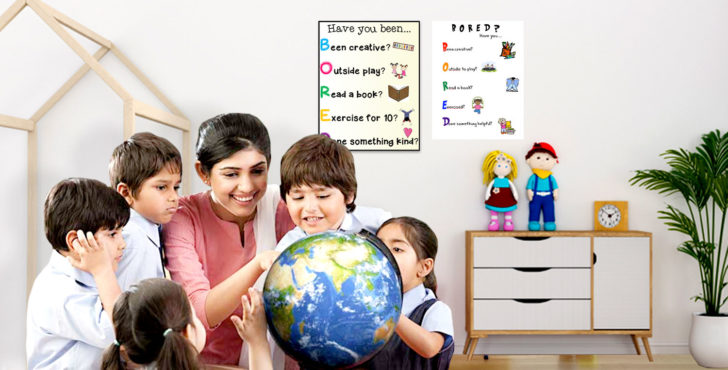Top Tips To Selecting Italian Primary Teaching Materials
Wiki Article
What Resources Do Italian Primary And Nursery Schools Require To Be Able To Impart Their Knowledge?
The materials are required to facilitate learning and development of children at the Italian primary or pre-school. Here are some examples of the types of materials that are required such as workbooks and textbooks They are crucial for teaching core subjects such as Italian mathematics, language sciences, social studies.
Art and craft materials This includes crayons, paint, brushes markers, and other supplies students can use for creative projects.
Blocks, puzzles and games are all manipulatives that can be utilized to aid students increase their problem-solving and critical thinking skills.
Educational technology: Computers, tablets and other devices can be utilized to improve learning and offer extra resources for students.
Visual aids, including diagrams, charts, or maps, can assist students retain and understand important concepts.
Books: A range of books that are appropriate for children's age in Italian can encourage reading and language development.
Musical Instruments Musical Instruments: Using musical instruments like xylophones, xylophones, and tambourines is a great way to teach music appreciation and rhythm.
Safety supplies: First aid kits, fire extinguishers or emergency procedures posters can help protect the health and safety of students.
Equipment for sports: Balls, cones, and other equipment are suitable for physical education classes and outdoor games.
Overall, Italian primary and nursery schools will require a diverse variety of teaching tools to provide a stimulating and engaging learning environment for their students. See the top sostegno infanzia for website advice.

What Maths Teaching Aids And Educational Materials Are Best In Italian Nurseries?
Materials and educational aids that teach math can help children develop their problem-solving and spatial skills. Here are some examples of recommended materials: Counting manipulatives: Counting manipulatives such as counting bears, blocks and beads are a great way for children to develop their counting skills, along with their fine motor skills as well as hand-eye coordination.
Number cards, charts Charts and cards to teach your kids how to count and to learn numbers. They can be large, colorful numbers for the walls, or smaller cards that kids can hold and manipulate.
Shape manipulatives. Children can be taught about various shapes using manipulatives for shapes. These include wood puzzles, pattern blocks and magnetic tiles.
Measuring tools: Measuring tools like rulers, tapes for measuring, and scales can help children understand measurement and compares and help build their mathematical vocabulary.
Simple games and puzzles: Simple puzzles and games such as jigsaws, dominoes or games that match can assist in the development of children's problem solving capabilities, attention to details, and concentration.
Technology-based resources: Technology can provide children with additional learning resources, including math apps on tablets and games.
These materials should be used in a manner that's developmentally appropriate and suitable for children who are just starting out. These tools are ideal for teachers and caregivers who want to create exciting and engaging games in math that spark children's curiosity. See the most popular materiale didattico matematica sostegno for site advice.

What Are The Suggested Historical Documents For Italian Schools Of The Nursery Age?
History didactics are a great method of introducing children to Italian nurseries to basic historical concepts. These are the kinds of history cards that can be recommended. Famous people cards. These cards allow youngsters to understand historical figures like explorers and scientists. They may include illustrations of the people, and also information on their life experiences.
Timeline Cards: These cards assist children to understand historical events in sequence and their interconnection. They could include images of important dates and events.
Cultural cards: These cards aid children in learning about various cultures and traditions from the past and present. The cards can include pictures of music, clothing, and traditions.
Artifact Cards. These cards assist children to visualize and understand historical events, and their methods of living. They may include illustrations from different historical periods and different cultures.
Map cards are a fantastic opportunity for children to learn about the geography and history of different regions and countries. These cards may include maps, historical information and illustrations.
It's important to select history cards that are engaging, interactive and appropriate for young children. Teachers and caregivers can to make use of these cards for engaging, interactive activities in the field of history. They will promote the kids' curiosity as well as their excitement about learning about other cultures and the historical past. Take a look at the most popular sostegno storia for blog recommendations.

What Geography Educational Materials Are Italian Schools Recommending?
Geography didactics cards are an excellent option to introduce children in Italian nursery schools to the fundamentals of geography. Certain types of cards can be beneficial for teaching geography. Continents Cards: Children will learn about the different continents of the globe, their places dimensions, sizes, and other natural characteristics.
Country cards: Country cards can aid children in learning about various countries, such as their locations the flag, language and even their culture.
The Landmark cards allow children to learn about landmarks, natural features, and their significance in the world.
Animal Cards: Animal cards allow children to learn all about the animals in the world and their natural habitats. It includes information about their diet as well as their behavior.
Weather cards. Children can use the weather cards to discover about various types of weather and the effects they have on the environment.
Natural resource decks: The natural resource decks are a great way to teach children the various types of resources that are accessible to them as well as their uses. These comprise water, forests, and minerals.
It is important to select cards that are engaging, appropriate for ages 0-12 and fun for children of all ages. Teachers and caregivers are able to make use of these cards to play fun, interactive geography activities. They will promote the children's interest in learning about diverse cultures and different countries. Follow the top sostegno geografia for site advice.
